33 Most Scenic Camping Places in the United States
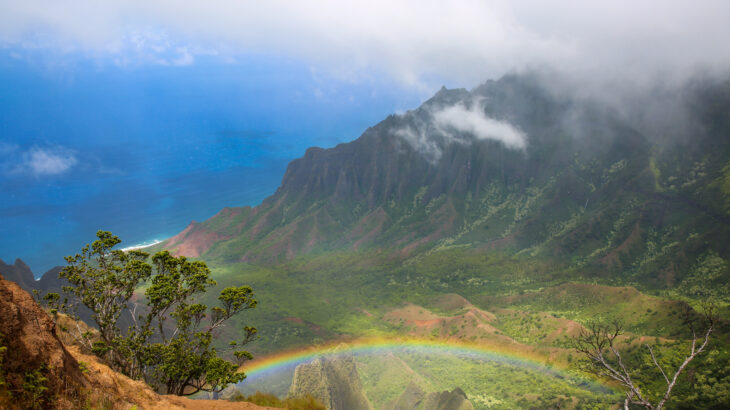
The Nā Pali Coast State Wilderness Park is a beautiful stretch of coastline on the island of Kauai in Hawaii. It features rugged cliffs, secluded beaches, and cascading waterfalls. The Nā Pali Coast is a popular destination for hiking, snorkeling, and kayaking. It is also home to the Kalalau Trail, which offers breathtaking views of the coastline and is considered one of the most challenging and rewarding hikes in Hawaii.

Carlsbad Caverns National Park is in the Chihuahuan Desert of southern New Mexico. It features more than 100 caves. The Natural Entrance is a path into the namesake Carlsbad Cavern. Stalactites cling to the roof of the Big Room, a huge underground chamber in the cavern. Walnut Canyon Desert Loop is a drive with desert views. Rattlesnake Springs, a desert wetland, attracts reptiles and hundreds of bird species.
Carlsbad Caverns National Park offers no overnight lodging or campgrounds. Primitive camping is allowed in the backcountry only, and requires a free permit which is issued at the park's visitor center when you arrive (not reservable in advance). Overnight RV parking is not permitted in the park.

Capitol Reef National Park is in Utah's south-central desert. It surrounds a long wrinkle in the earth known as the Waterpocket Fold, with layers of golden sandstone, canyons and striking rock formations. Among the park's sights are the Chimney Rock pillar, the Hickman Bridge arch, and Capitol Reef, known for its white sandstone domes. In the north are the towering monoliths of Cathedral Valley.
Pick from three campgrounds in the area: Fruita, Cathedral Valley or Cedar Mesa. All sites will set you up to experience the national park. The 71-site Fruita Campground is the only developed campground in the park. Cathedral Valley is a primitive campground with no-fee and has six sites. The Cedar Mesa Campground is located about 35 miles south of the Utah State Highway 24, and is at 5,500 feet in elevation. This primitive, no-fee campground has five sites.

Pfeiffer Big Sur State Park is a state park in Monterey County, California, near the area of Big Sur on the state's Central Coast. It covers approximately 1,006 acres of land. The park is centered on the Big Sur River. It has been nicknamed a "mini Yosemite." Redwood trees are known to live up to 2,200 years.
Pfeiffer Big Sur is an extremely popular campground. Reservations fill up six months in advance, even in the winter. All campsites at Pfeiffer Big Sur are on a reservation system. During peak season, the entire campground is usually reserved (booked 6 months in advance). Occasionally, there may be cancellations that allow some day-of sites to be available. To get a day-of campsite (also known as a walk-up campsite), you must be physically present at the park's entrance kiosk. Pfeiffer Big Sur State Park has one cabin available for reservation.

Green Mountain National Forest is a national forest located in Vermont, a temperate broadleaf and mixed forest typical of the New England/Acadian forests ecoregion. The forest supports a variety of wildlife, including beaver, moose, coyote, black bear, white-tailed deer, wild turkey, and ruffed grouse. The forest, being situated in Vermont's Green Mountains, has been referred to as the granite backbone of the state.
Camping is a favorite activity on National Forests. The Green Mountain and Finger Lakes National Forests offer a variety of camping experiences ranging from developed campgrounds to backcountry camping.Developed campground sites requires a reservation at least 7 days in advance. Reservations cannot be made by calling the forest.
Developed campsites that do not need a reservation, are first-come first-served. The forest is not able to manage a list of availability.Backcountry camping is allowed in most locations on the forest unless there is a specific closure order in place for a particular area.The following camping practices are recommended. Locate campsites at least 200’ from trails or waterbodies including ponds, rivers, and streams.
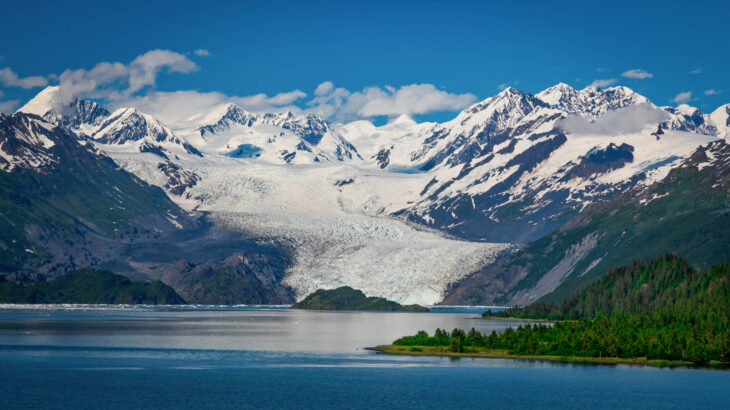
" Covering 3.3 million acres of rugged mountains, dynamic glaciers, temperate rainforest, wild coastlines and deep sheltered fjords, Glacier Bay National Park is a highlight of Alaska's Inside Passage and part of a 25-million acre World Heritage Site—one of the world’s largest international protected areas. From sea to summit, Glacier Bay offers limitless opportunities for adventure and inspiration.
Camping in Bartlett Cove is limited to the developed campground. Obtain a free campground permit from the Visitor Information Station between May 1 and September 30. From May 1 to September 30, all overnight backcountry users (including kayakers) must register for a free permit and complete an orientation. There is no limit to the number of permits issued per-day. We recommend that camping parties complete their orientation and permit application in advance of and before the planned departure date. " - NPS
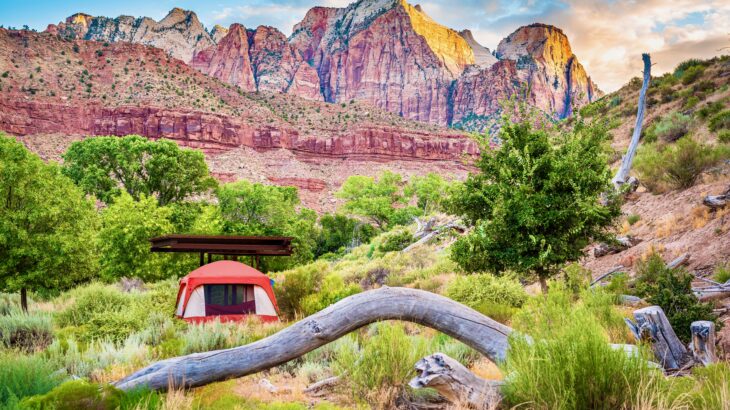
Zion National Park is a southwest Utah nature preserve distinguished by Zion Canyon’s steep red cliffs. Zion Canyon Scenic Drive cuts through its main section, leading to forest trails along the Virgin River. The river flows to the Emerald Pools, which have waterfalls and a hanging garden. Also along the river, partly through deep chasms, is Zion Narrows wading hike.
Zion National Park has three campgrounds. South and Watchman Campgrounds are in Zion Canyon. The Lava Point Campground is about a 1-hour drive from Zion Canyon on the Kolob Terrace Road. There are no campgrounds in Kolob Canyons. Camping is permitted in designated campsites, but not in pullouts or parking lots. From mid-March through late November the campgrounds are full almost every night. Reservations at South Campground and Watchman Campground are recommended if you would like to guarantee a camping spot.
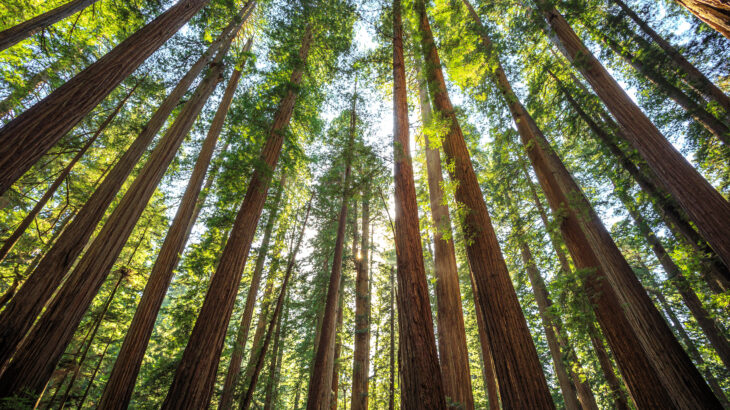
Jedediah Smith Redwoods State Park is a state park of California, United States, preserving old-growth redwoods along the Smith River. It is located along U.S. Route 199 approximately 9 miles east of Crescent City. Jedediah Smith Redwoods State Park is the last in a long string of redwood parks that stretch up Northern California's coast. A few miles inland from the ocean, the park is densely forested with huge ancient trees. In fact, it contains seven percent of all the old-growth redwoods left in the world.
Jedediah Smith Redwoods State Park Campground features 86 campsites. Fifty are for RVs, trailers, or tents. Sixteen sites are designated tents only. Campsites are shaded by redwoods and alders.

Located in western Michigan, Ludington State Park spans 5,300 acres and just last year celebrated its 80th birthday. Known as the most popular state park in Michigan, Ludington attracts a large number of tourists due to its widely diverse attractions, which include hiking, fishing, biking, boating, swimming, and sledding.
Whether you prefer modern or primitive camping, the Ludington State Park has it all, surrounded by natural woodlands, water and dunes. There are a total of 355 sites among all the campgrounds, including three mini-cabins.

This enchanted forest is known as the Land of the Waterfalls. It encompasses 500,000 acres of the Appalachian Mountains just outside of Asheville, North Carolina. Mile-high peaks offer majestic views and campers can enjoy rock climbing, backpacking, and fishing.
Camping is allowed anywhere on National Forest property, except within 500' of a road or in a designated closed area. Good campsites can be found along many trails in the area, especially those in the South Mills River section, for possible backpacking loops.
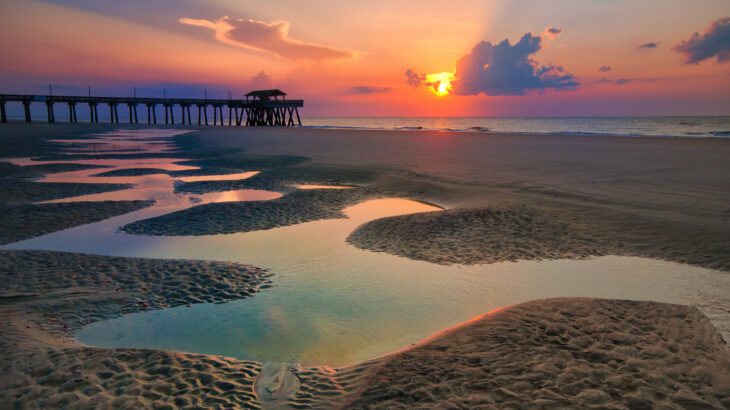
Tybee Island, Georgia Just a short boat ride south of Tybee Island, Georgia, this is the perfect spot to sleep under the stars. The island has a number of endangered species of birds, rich salt marshes, and natural dunes. This wildlife reserve is twice the size of Tybee, yet completely uninhabited.
Tybee Island offers a truly primitive camping experience. Accessible only by boat or kayak, there are no facilities but campers can pitch a tent anywhere on the island.
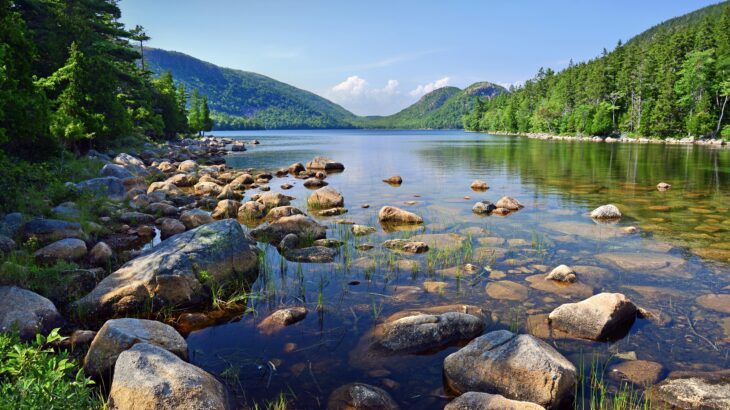
Acadia National Park is an American national park located along the mid-section of the Maine coast, southwest of Bar Harbor. The park preserves about half of Mount Desert Island, part of the Isle au Haut, the tip of the Schoodic Peninsula, and portions of 16 smaller outlying islands. It protects the natural beauty of the rocky headlands, including the highest mountains along the Atlantic coast. Acadia boasts a glaciated coastal and island landscape, an abundance of habitats, a high level of biodiversity, clean air and water, and a rich cultural heritage.
The park contains the tallest mountain on the Atlantic Coast of the United States (Cadillac Mountain), exposed granite domes, glacial erratics, U-shaped valleys, and cobble beaches. Its mountains, lakes, streams, wetlands, forests, meadows, and coastlines contribute to a diversity of plants and animals.
There are two campgrounds on Mount Desert Island, one campground on the Schoodic Peninsula, and five lean-to shelters on Isle au Haut. There is no backcountry camping, "out-of-bounds" camping, or overnight parking allowed anywhere in Acadia.

Arches National Park is a national park in eastern Utah, United States. The park is adjacent to the Colorado River, 4 miles (6 km) north of Moab, Utah. More than 2,000 natural sandstone arches are located in the park, including the well-known Delicate Arch, as well as a variety of unique geological resources and formations. The park contains the highest density of natural arches in the world.
Devils Garden Campground is the only campground at Arches National Park. You can reserve campsites for nights between March 1 and October 31. During this busy season, the campground is usually full every night. If you're arriving at Arches without a reservation, you'll probably have to look for a campsite outside the park. Between November and February, campsites are first-come, first-served. You can backpack at Arches in a small number of designated sites and zones. Backpacking at Arches is more challenging than other places. It requires off-trail travel and route finding. Get a permit at the visitor center.
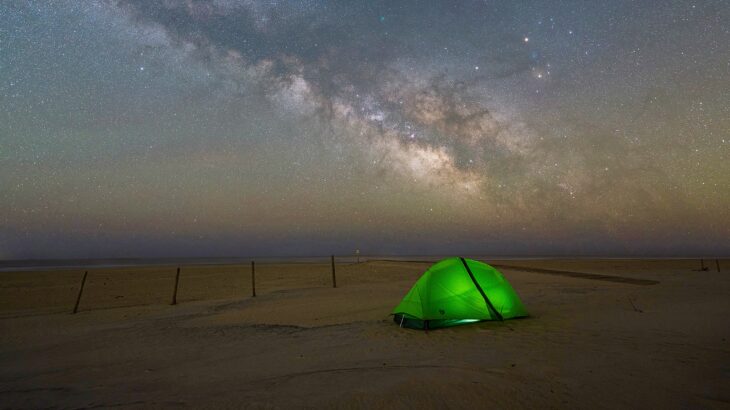
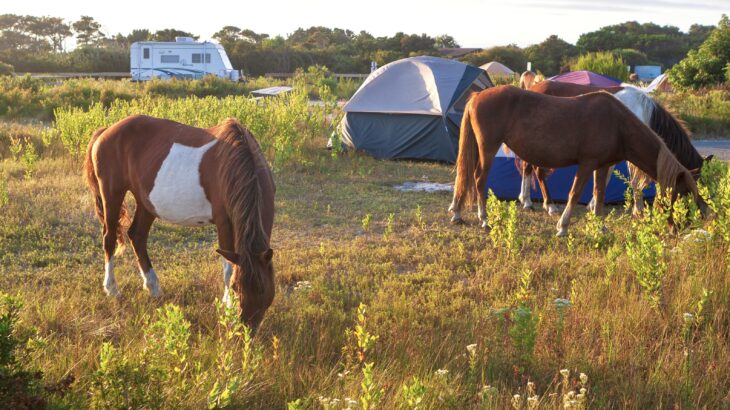
Assateague Island is a 37-mile (60 km) long barrier island located off the eastern coast of the Delmarva Peninsula facing the Atlantic Ocean. The northern two-thirds of the island is in Maryland while the southern third is in Virginia. The Maryland section contains the majority of Assateague Island National Seashore and Assateague State Park. The Virginia section contains Chincoteague National Wildlife Refuge and a one-mile stretch of land containing the lifeguarded recreational beach and interpretive facilities managed by the National Park Service (or NPS). It is best known for its herds of feral horses, pristine beaches and the Assateague Lighthouse. The island also contains numerous marshes, bays, and coves, including Toms Cove.
Camping is available only in the Maryland district of Assateague Island. Reservations are required from March 15 through November 15. Campsite reservations are available six months in advance. Oceanside Drive-in: Tents, trailers and recreational vehicles (no hookups). Sites have a picnic table and a fire ring. Oceanside Walk-in: Tent-only sites, located 100-200 feet from centralized parking areas. Sites have a picnic table and a fire ring. Walk-in sites are closed from November 16 through March 14. Bayside Drive-in: Tents, trailers and recreational vehicles (no hookups). Sites have a picnic table and a fire ring. A Drive-In "Generator-Free Zone" is located in Bayside B Loop. Horse Camp: There are 2 campsites for horse camping available October 16 through April 14. Each site accommodates up to 6 people and 6 horses. Assateague has two oceanside and four bayside camping areas in Maryland for visitors who wish to backpack or paddle the island.
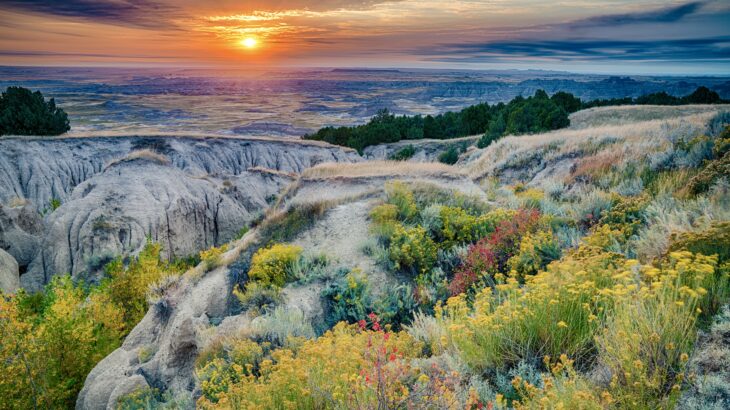
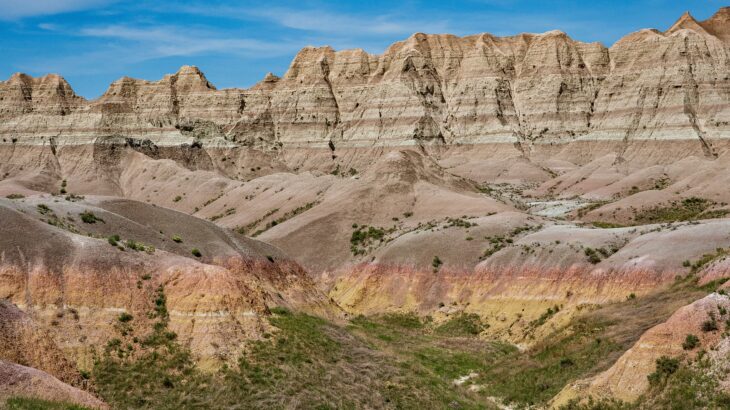
Badlands National Park (Lakota: Makȟóšiča) is an American national park located in southwestern South Dakota. The park protects 242,756 acres (379.3 sq mi; 982.4 km2) of sharply eroded buttes and pinnacles, along with the largest undisturbed mixed grass prairie in the United States. The National Park Service manages the park, with the South Unit being co-managed with the Oglala Lakota tribe. The White River Badlands have developed an international reputation as a fossil-rich area. They contain the richest deposits of Oligocene mammals known, providing a glimpse of life in the area 33 million years ago.
For those interested in front-country camping, the park offers two official campgrounds. The Cedar Pass Campground is a paid campground with 96 sites total, some designated for RV camping with electric hookups. Sage Creek Campground is a free, first-come first-serve campground with 22 sites. Motor homes, pull behind trailers, and other recreational vehicles greater than 18 feet in length are prohibited. For those seeking a more rugged camping experience, back-country camping is also available in the park. Back-country camping is permitted anywhere in the park as long as it is 0.5 miles from a road or trail and is not visible from a trail or roadway.
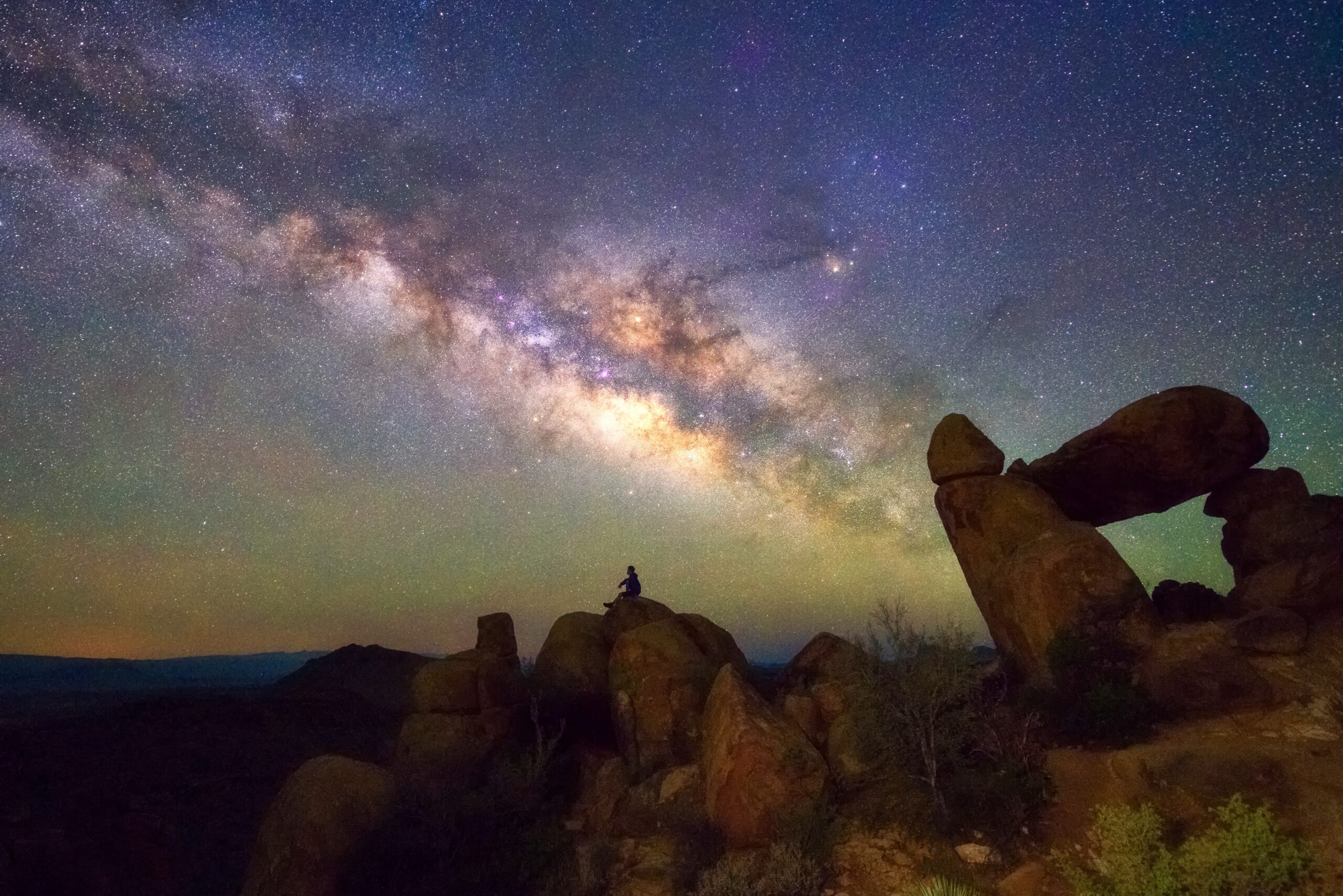
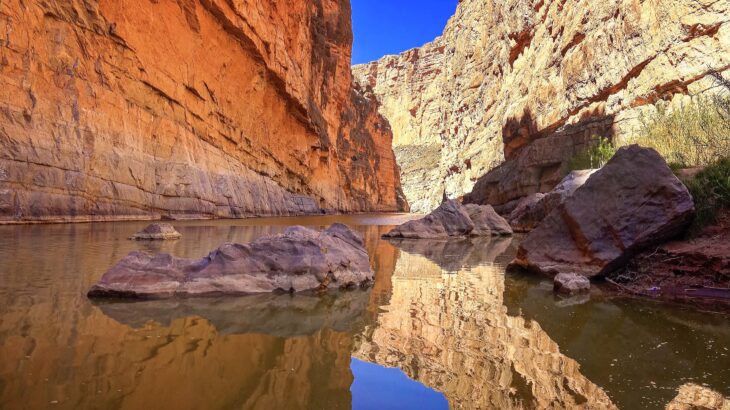
Big Bend National Park is an American national park located in West Texas, bordering Mexico. The park has national significance as the largest protected area of Chihuahuan Desert topography and ecology in the United States, and was named after a large bend in the Rio Grande/Río Bravo. The park protects more than 1,200 species of plants, more than 450 species of birds, 56 species of reptiles, and 75 species of mammals. Additional park activities include scenic drives, programs led by Big Bend park rangers, and stargazing.
There are four campgrounds in Big Bend National Park. The National Park Service (NPS) operates three developed frontcountry campgrounds that provide drinking water and restroom facilities. In addition, a full hookup RV camping area is operated by the park concessioner, Forever Resorts. Reservations are required for Big Bend National Park Campgrounds. Reservations can be made by visiting recreation.gov. For visitors with rugged vehicles, or the willingness to leave the road behind and backpack into the wild, Big Bend provides options for backcountry camping. A backcountry permit is required for all backcountry camping and river trips.
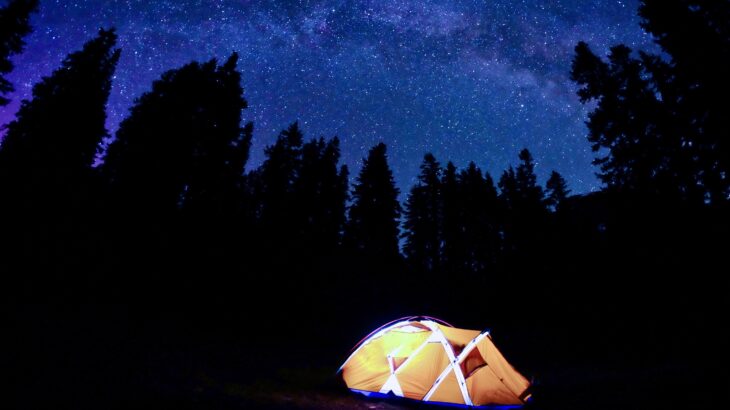
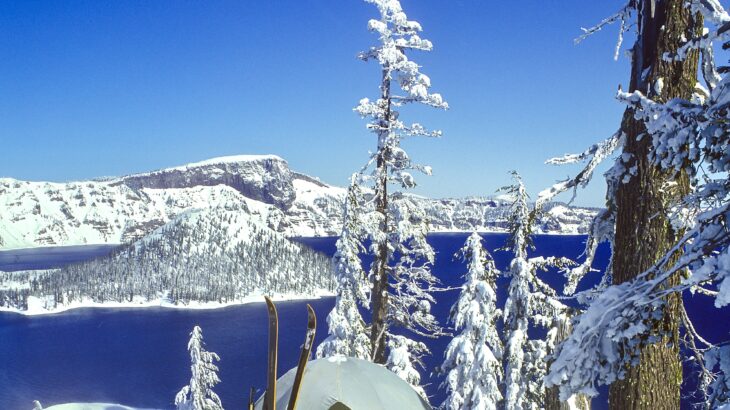
Crater Lake (Klamath: Giiwas) is a crater lake in south-central Oregon in the western United States. It is the main feature of Crater Lake National Park and is famous for its deep blue color and water clarity. The lake partly fills a nearly 2,148-foot-deep (655 m) caldera that was formed around 7,700 (± 150) years ago by the collapse of the volcano Mount Mazama. There are no rivers flowing into or out of the lake; the evaporation is compensated for by rain and snowfall at a rate such that the total amount of water is replaced every 250 years. With a depth of 1,949 feet (594 m), the lake is the deepest in the United States. In the world, it ranks ninth for maximum depth, and third for mean (average) depth. Crater Lake features two small islands. Wizard Island, located near the western shore of the lake, is a cinder cone approximately 316 acres (128 ha) in size. Phantom Ship, a natural rock pillar, is located near the southern shore.
The park has two developed campgrounds, Mazama Campground and Lost Creek Campground. They are open only in the summer. Mazama Campground has 214 sites for tents and RVs. Lost Creek Campground has 16 sites for tents only. Sleeping overnight in the park is allowed only for hotel guests, campground campers, and backpackers who obtain a backcountry permit. Camping in the park’s pullouts, picnic areas, and parking lots is prohibited.
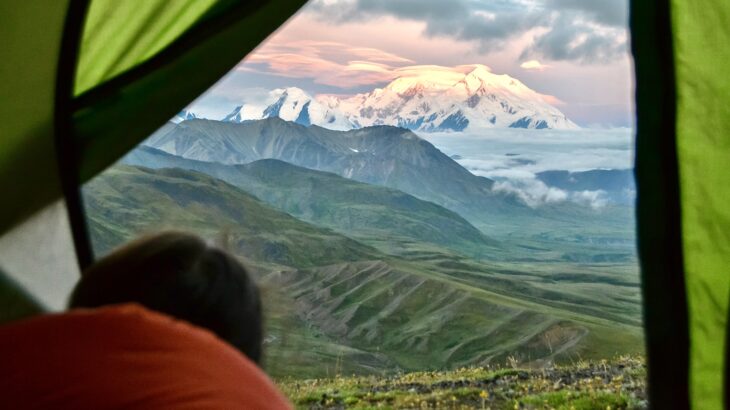
Denali National Park and Preserve, formerly known as Mount McKinley National Park, is an American national park and preserve located in Interior Alaska, centered on Denali, the highest mountain in North America. The park and contiguous preserve encompass 6,045,153 acres (9,446 sq mi; 24,464 km2) which is larger than the state of New Hampshire. On December 2, 1980, 2,146,580-acre (3,354 sq mi; 8,687 km2) Denali Wilderness was established within the park. Denali's landscape is a mix of forest at the lowest elevations, including deciduous taiga, with tundra at middle elevations, and glaciers, snow, and bare rock at the highest elevations. The longest glacier is the Kahiltna Glacier. Wintertime activities include dog sledding, cross-country skiing, and snowmobiling.
Camping in Denali offers a great way to experience this spectacular park. Whether you wish to tent-camp, or camp with an RV or other vehicle, one or more of the park campgrounds should suit your interests. Please note that vehicles can only camp in established, open campgrounds in the park - not along pullouts or the side of the road. Backcountry permits are reserved by email at least two days in advance but no more than 14 days before the start of your trip.

Dry Tortugas National Park is a national park in the United States about 68 miles (109 km) west of Key West in the Gulf of Mexico. The park preserves Fort Jefferson and the seven Dry Tortugas islands, the westernmost and most isolated of the Florida Keys. The archipelago's coral reefs are the least disturbed of the Florida Keys reefs. The park is noted for abundant sea life, tropical bird breeding grounds, colorful coral reefs, and legends of shipwrecks and sunken treasures. The park's centerpiece is Fort Jefferson, a massive but unfinished coastal fortress.
A primitive campground is located on Garden Key and is a short walk from the public dock. Reservations are not accepted for the regular 6-person campsites. Regular campsites are first-come, first-served only. The only campsite that can be reserved in advance is the group site for 10-20 people.

Glacier National Park is an American national park located in northwestern Montana, on the Canada–United States border, adjacent to the Canadian provinces of Alberta and British Columbia. The park encompasses more than 1 million acres (4,000 km2) and includes parts of two mountain ranges (sub-ranges of the Rocky Mountains), more than 130 named lakes, more than 1,000 different species of plants, and hundreds of species of animals. This vast pristine ecosystem is the centerpiece of what has been referred to as the "Crown of the Continent Ecosystem," a region of protected land encompassing 16,000 square miles (41,000 km2).
With over 60 designated backcountry campgrounds throughout the park, Glacier is a backpacker’s paradise. To camp in the backcountry, a backcountry use permit is required for all overnight camping. Glacier National Park has 13 campgrounds. Three campgrounds allow reservations for individual sites.

Grand Canyon National Park, located in northwestern Arizona, is the 15th site in the United States to have been named as a national park. The park's central feature is the Grand Canyon, a gorge of the Colorado River, which is often considered one of the Wonders of the World. The Grand Canyon, including its extensive system of tributary canyons, is valued for its combination of size, depth, and exposed layers of colorful rocks dating back to Precambrian times. The canyon itself was created by the incision of the Colorado River and its tributaries after the Colorado Plateau was uplifted, causing the Colorado River system to develop along its present path. The primary public areas of the park are the South and North Rims, and adjacent areas of the canyon itself. The rest of the park is extremely rugged and remote, although many places are accessible by pack trail and backcountry roads. The South Rim is more accessible than the North Rim and accounts for 90% of park visitation.

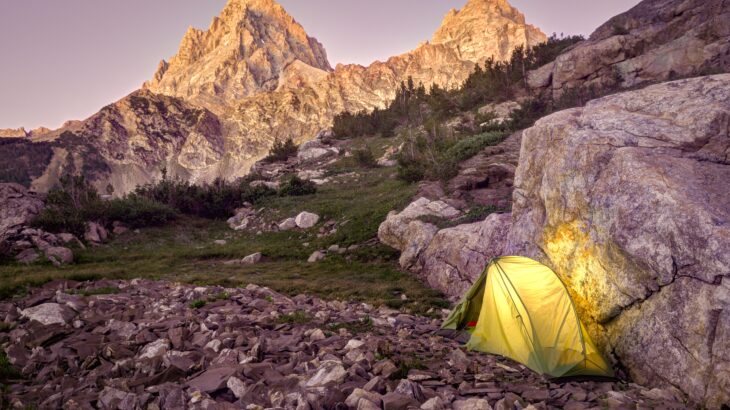
Grand Teton National Park is an American national park in northwestern Wyoming. At approximately 310,000 acres (1,300 km2), the park includes the major peaks of the 40-mile-long (64 km) Teton Range as well as most of the northern sections of the valley known as Jackson Hole. Grand Teton National Park is only 10 miles (16 km) south of Yellowstone National Park, to which it is connected by the National Park Service–managed John D. Rockefeller Jr. Memorial Parkway. Along with surrounding national forests, these three protected areas constitute the almost 18-million-acre (73,000-square-kilometer) Greater Yellowstone Ecosystem, one of the world's largest intact mid-latitude temperate ecosystems.
Camping is a great way to immerse yourself in the stunning scenery of Grand Teton National Park. There are many options for camping. If you are feeling adventurous and searching for solitude, get a permit to pitch a tent in the backcountry. Looking for a few more comforts? You can tent camp or park and plug in your recreational vehicle at over 1,000 campsites at seven park campgrounds.All park campgrounds are by advanced reservations only. Campsites are reservable on Recreation.gov.

The Gunnison National Forest is a U.S. National Forest covering 1,672,136 acres (2,612.71 sq mi, or 6,766.89 km²) in Mesa, Gunnison, Hinsdale and Saguache Counties in Western part of the U.S. state of Colorado. It borders the White River National Forest to the north, the Grand Mesa and Uncompahgre National Forests to the west, the San Isabel National Forest to the east and the Rio Grande National Forest to south. It shares the Maroon Bells-Snowmass Wilderness with the White River and San Isabel National Forests, and the Collegiate Peaks Wilderness Area with the San Isabel National Forest.
GMUG National Forest offers cabin rentals, developed campgrounds and more isolated dispersed camping areas. With some pre-planning you can find a perfect spot for you and your family! While electric, sewer, water hook-ups and showers are not always available; most campgrounds have potable water, picnic tables, fire rings and vault toilets. Campground reservations may be made at some sites through www.recreation.gov. Where available, reservations are recommended for holiday weekends.
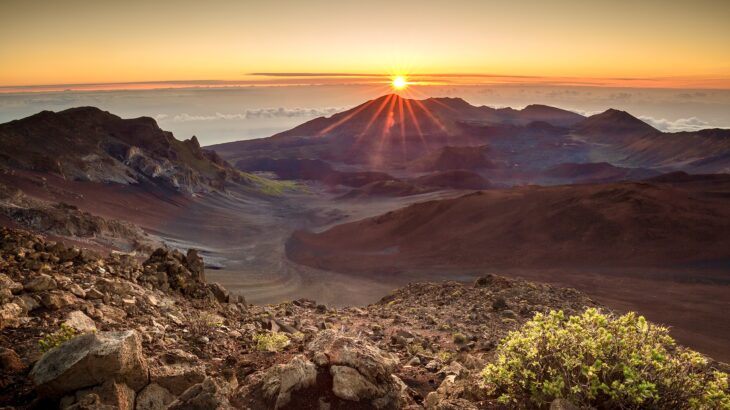
Haleakalā National Park is an American national park located on the island of Maui in the state of Hawaii. Named after Haleakalā, a dormant volcano within its boundaries, the park covers an area of 33,265 acres (52.0 sq mi; 134.6 km2), of which 24,719 acres (38.6 sq mi; 100.0 km2) is a wilderness area.
The park is known for its volcanic features, its long scenic drive with numerous overlooks, and the unusually clear views of the night sky available. Haleakalā is one of the best places in the United States for amateur astronomy. Visitors frequently come to the summit of the volcano to watch the sunrise and/or sunset.
Six designated sites are located in an open, grassy area near the forest and shrubland of Hosmer Grove. Each site has a picnic table, grill, and access to potable water. Campers who obtain a reservation to camp at Hosmer Grove campground also receive a reservation to view sunrise the morning after camping. There are two primitive wilderness tent camping areas which are accessible only by trail, Hōlua and Palikū. Reservations are required for both campsites through www.recreation.gov.
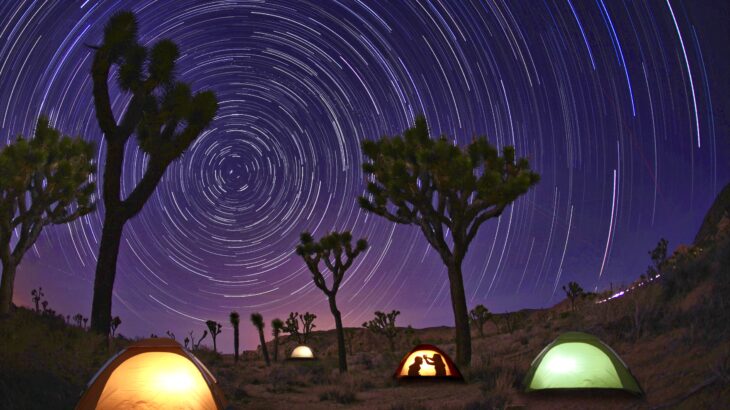
Joshua Tree National Park is an American national park in southeastern California, east of San Bernardino and Los Angeles and north Palm Springs. It is named after the Joshua trees (Yucca brevifolia) native to the Mojave Desert.
The park includes parts of two deserts, each an ecosystem whose characteristics are determined primarily by elevation: the higher Mojave Desert and the lower Colorado Desert. The Little San Bernardino Mountains traverse the southwest edge of the park.
The majority of the 500 campsites in the park are available by reservation. Reservations can be made the same day or up to 6 months in advance and can be booked on recreation.gov. First-come, first-serve campsites are highly competitive on holidays, most weekends, and the springtime. Sleeping in your vehicle overnight along the roadside or at a roadside pull off is not allowed.

Minnewaska State Park Preserve is situated on the dramatic Shawangunk Mountain ridge, which rises more than 2,000 feet above sea level and is surrounded by rugged, rocky terrain. The park features numerous waterfalls, three crystalline sky lakes, dense hardwood forests, incising sheer cliffs and ledges opening to beautiful views, clear streams cut into valleys, 35 miles of carriage roads and 50 miles of footpaths on which to bike, walk, hike and simply enjoy.
The Samuel F. Pryor III Shawangunk Gateway Campground provides a high quality, minimalist camping experience for visitors to the breathtaking Shawangunk Mountains. The tent-only campground includes a pavilion and cooking area, bathhouse and restroom facilities, and circulation trails. There are 24 drive-in spots (one vehicle per site) and 26 walk-in spots. All sites accommodate up to two tents (and four people) per pad. Recreational vehicles are not permitted. Camping is open mid-May through mid-November, weather permitting. - NY State Parks
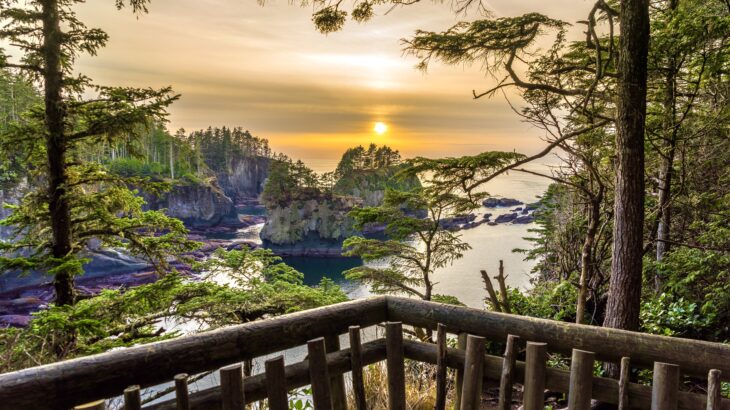
Olympic National Park is a United States national park located in the State of Washington, on the Olympic Peninsula. The park has four regions: the Pacific coastline, alpine areas, the west-side temperate rainforest, and the forests of the drier east side. Within the park there are three distinct ecosystems, including subalpine forest and wildflower meadow, temperate forest, and the rugged Pacific coast.
Olympic offers reserved camping, walk up camping, and wilderness camping permits are required for all overnight stays in the Olympic National Park wilderness (backcountry) year-round.
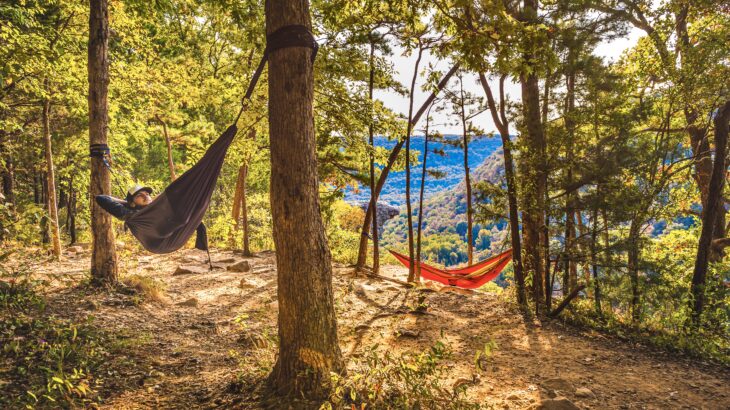

The Ozark National Forest encompasses 1,200,000 acres (4,856 km2) primarily in the scenic Ozark Mountains in northern Arkansas. The forest contains the tallest mountain in Arkansas, Mount Magazine, and Blanchard Springs Caverns. The southern section of the forest lies along the Arkansas River Valley south to the Ouachita Mountains.
The forest was created in 1908 by proclamation of President Theodore Roosevelt. The forest is home to over 500 species of trees and woody plants. The forest contains five designated wilderness areas and several Wildlife Management Areas. In addition to the hiking trails, the forest provides trails designated for horseback riding, canoeing, mountain biking, and all-terrain vehicles. The longest horse trail is the Sylamore Trail with a length of 80 miles (130 km). This trail passes over rocky bluffs, into deep hollows, and across mountain streams.
The Ozark National Forests offer a variety of camping opportunities. You can pitch a tent, park the RV, pop-up trailer or pick-up truck, or roll out the sleeping bag. Whatever your method of camping, it will be a truly natural experience in the Ozark Mountains. Fees are charged on a number of Ozark-St. Francis recreation sites; however, there are many recreation sites on the forests which do not charge a fee.
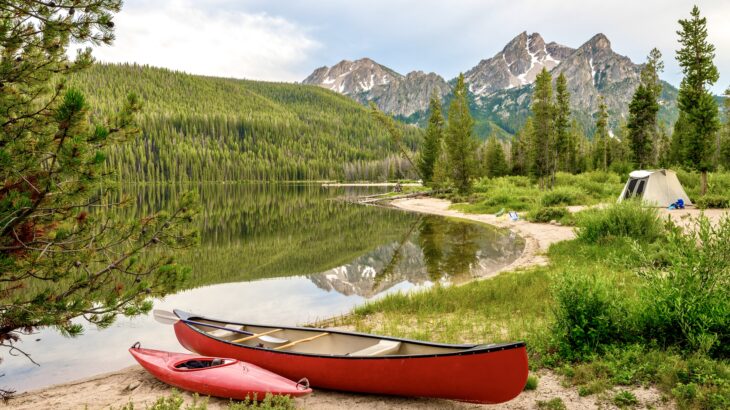
Sawtooth National Forest is a National Forest that covers 2,110,408 acres (854,052 ha) in the U.S. states of Idaho (~96 percent) and Utah (~4 percent). Managed by the U.S. Forest Service in the U.S. Department of Agriculture. Sawtooth National Forest offers facilities for recreation, with four ski areas, whitewater and flatwater boating, hunting, 81 campgrounds, and over 1,000 mi (1,600 km) of trails and roads for hiking, mountain biking, and all-terrain vehicle use, including two National Recreation Trails.
Sawtooth offers cabins, campgrounds, and dispersed camping. See the US Forest Service for more information.
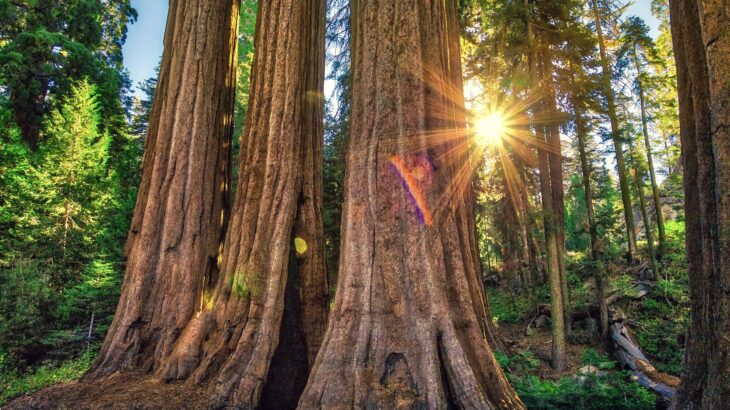
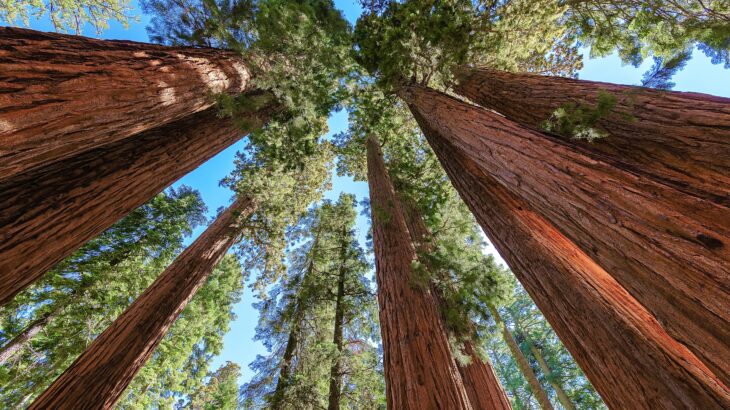
Kings Canyon National Park is an American national park in the southern Sierra Nevada, in Fresno and Tulare Counties, California. Originally established in 1890 as General Grant National Park, the park was greatly expanded and renamed to Kings Canyon National Park on March 4, 1940. The park's namesake, Kings Canyon, is a rugged glacier-carved valley more than a mile (1,600 m) deep. Other natural features include multiple 14,000-foot (4,300 m) peaks, high mountain meadows, swift-flowing rivers, and some of the world's largest stands of giant sequoia trees. Kings Canyon is north of and contiguous with Sequoia National Park, and both parks are jointly administered by the National Park Service as the Sequoia and Kings Canyon National Parks.
There are fourteen campgrounds in these parks, including three that are open year-round. Campgrounds require reservations in advance, and sites are usually full.
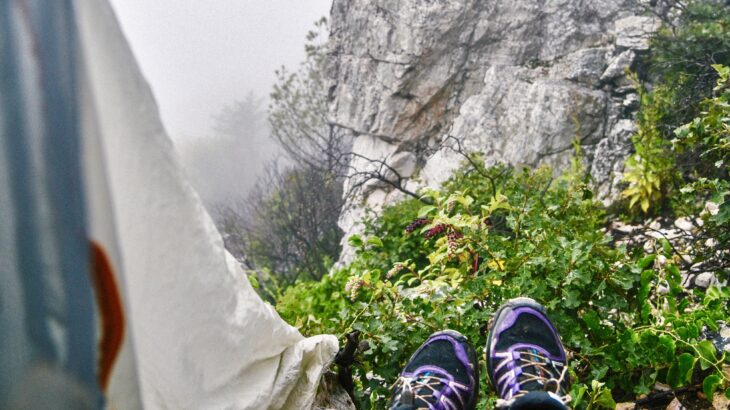
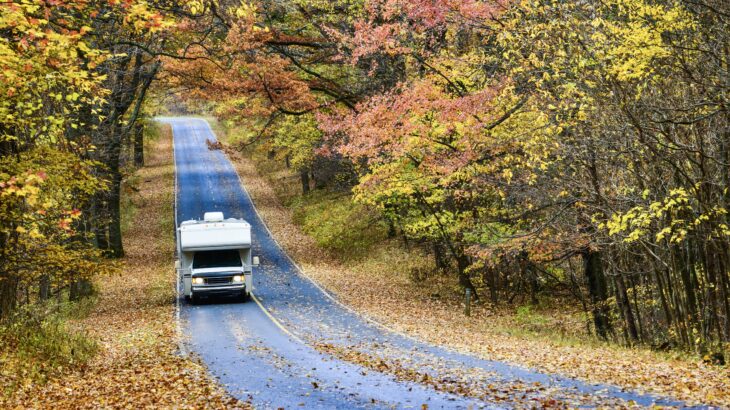
Shenandoah National Park is an American national park that encompasses part of the Blue Ridge Mountains in the Commonwealth of Virginia. The park is long and narrow, with the Shenandoah River and its broad valley to the west, and the rolling hills of the Virginia Piedmont to the east. Skyline Drive is the main park road, generally traversing near the ridgeline of the mountains. Almost 40% of the land area—79,579 acres (124.3 sq mi; 322.0 km2)—has been designated as wilderness and is protected as part of the National Wilderness Preservation System. The highest peak is Hawksbill Mountain at 4,051 feet.
Shenandoah National Park campgrounds are open seasonally, from early spring until late fall. Reservations are highly recommended on weekends and holidays. Many sites can be reserved 6 months ahead of time. A free backcountry camping permit is required to camp in Shenandoah's backcountry.
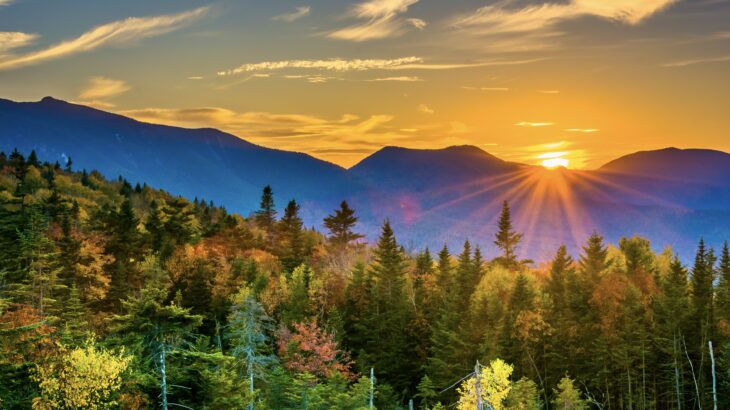
The White Mountain National Forest (WMNF) is a federally managed forest contained within the White Mountains in the northeastern United States. It has a total area of 750,852 acres (303,859 ha) (1,225 sq mi). Most of the WMNF is in New Hampshire; a small part (about 5.65% of the forest) is in the neighboring state of Maine. While often casually referred to as a park, this is a national forest, used not only for hiking, camping, and skiing but for logging and other limited commercial purposes. Most of the major peaks over 4,000 feet high for peak-bagging in New Hampshire are located in the national forest. Over 100 miles (160 km) of the Appalachian Trail traverses the White Mountain National Forest.
The White Mountain National Forest offers a variety of camping experiences: from family-friendly developed campgrounds, to popular backcountry sites, to the solitude of a Wilderness setting.

Yosemite National Park is an American national park in California, surrounded on the southeast by Sierra National Forest and on the northwest by Stanislaus National Forest. The park is managed by the National Park Service and covers an area of 759,620 acres and sits in four counties: centered in Tuolumne and Mariposa, extending north and east to Mono and south to Madera County. Designated a World Heritage Site in 1984, Yosemite is internationally recognized for its granite cliffs, waterfalls, clear streams, giant sequoia groves, lakes, mountains, meadows, glaciers, and biological diversity. Almost 95% of the park is designated wilderness.
Yosemite National Park has 13 popular campgrounds, of which up to seven are on a reservation system. From April through September, reservations are essential and even the first-come, first-served campgrounds usually fill by noon (often earlier) from April through September.
No more articles to load
